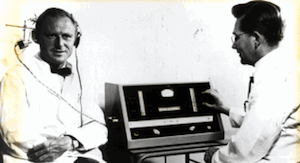A June 7 article Finding the Right Balance by Alex Hutchinson in the New York Times Review section offered up an interesting perspective on balance training, and cited some evidence to support it. I always welcome attention to balance and vestibular issues, and this article reliably (if not predictably) covered the often heard statistics about the frequency and consequences of falling.
Where the author really did his readers a favor was in his description of the complexity and multi-factorial nature of balance. I found this passage intriguing: “We’ve come to view fitness as a collection of discreet traits-muscular strength, aerobic endurance, flexibility and so on- that can be isolated, measured and tinkered with independently”
As a vestibular specialist, it is tempting to break down a complaint of poor balance or risk of falling in the same way. Is this a vestibular problem? A cerebellar disorder? A medication side effect? The reality is that, particularly in the geriatric population, the answer could be “Yes” to all three of those questions. Then, you have the additional complexity of trying to assess the interaction of these multiple deficits. Is the medication exacerbating the cerebellar disorder? Is the cerebellar disorder inhibiting predictable recovery from a simple vestibular disorder? Again, the answer might be “Yes” to all of that.
Fortunately, all this complexity does not cloud the picture of what to do for these patients, but it does add a significant element of unpredictability to outcomes. The author makes the case for more challenging balance training, not necessarily as a treatment for fall prevention, but for increasing or preserving cognition as we age. He cites a 2011 German study that demonstrated two things. One we already knew, that exercise improves cognition. The second, and news to me, was that when the exercises challenged balance and reaction time, they relied on a “higher level” cognitive process that resulted in greater increase in neural “synapses connecting the neurons.”
The article did not say if any of the training described resulted in fewer falls, and the subjects they studied were athletes, not frail fall prone seniors. But, it is an interesting concept implying that the element of “unpredictability” may be a critical part of basic balance/fall prevention training.
Photo courtesy of one eleven books for 2







